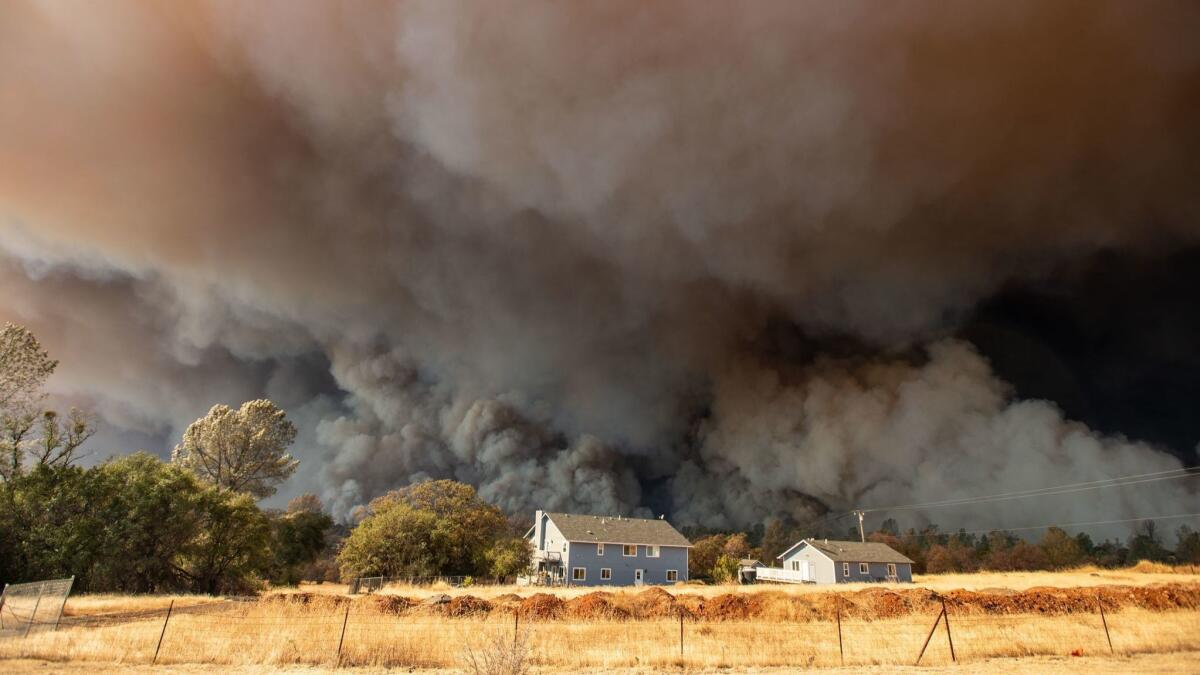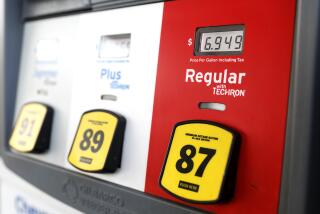Capitol Journal: Should California bail out Pacific Gas & Electric?

The scary word every Sacramento politician wants to avoid is “bailout” — as in bailing out unpopular Pacific Gas & Electric Co.
It’s a dilemma because PG&E is universally, if quietly, seen as too big to fail. It’s too important and vital. It provides natural gas and electricity for 16 million people — 40% of the state — throughout northern and central California.
But the utility’s laxly maintained equipment has caused many devastating wildfires. So facing what it estimates to be $30 billion in potential liabilities for fire losses, PG&E has filed for bankruptcy.
The utility didn’t help its public image recently by asking the bankruptcy judge for permission to spend $130 million on employee bonuses and other perks. Meanwhile, burned out victims of the Camp fire are struggling to find shelter.
The state certainly doesn’t want to take over PG&E and go into the business of supplying gas and electricity. And local governments probably aren’t capable of scooping up the utility and assuming its role.
“The danger is that local government would take all the good parts and what’s left would be the fire-threatened areas,” says Assemblyman Chris Holden (D-Pasadena), chairman of the Utilities and Energy Committee.
“The state, in taking over PG&E, would have to buy all the infrastructure. The costs would be pretty significant. And the fire risk would still be there. It would be just changing jerseys. Instead of the [fire] liability falling on the utility, it would fall on taxpayers. That’s not a very attractive deal.”
So whatever it’s called — a bailout, corporate welfare or just common sense — Gov. Gavin Newsom and the Legislature need to do things to help the utility stay afloat after it goes through its second bankruptcy in two decades.
“I’ve been through this dance before,” says Sen. Bob Hertzberg (D-Van Nuys), who was Assembly speaker when PG&E filed for bankruptcy the last time in 2001. That was during a horrendous energy crisis, caused by out-of-state power pirates capitalizing on a disastrous energy deregulation scheme passed unanimously by the Legislature.
“I learned you’ve got to have a financial system for all utilities that works,” Hertzberg says. “That [1996] deal didn’t work. It caused the utilities to go upside down.”
“Nobody wants to bail out PG&E,” Hertzberg adds. “Everyone wants to talk about how bad PG&E is, but it’s only the tip of the iceberg.”
Climate change with its volatile shifts in weather — drought and downpours, dry vegetation and high winds — is creating bigger, deadlier wildfires, experts say. Former Gov. Jerry Brown called it “the new normal.”
The consensus in the Capitol is that wildfires can only be minimized, not stopped.
“My big message is: Fix it now,” Hertzberg says. “I don’t want this issue to derail us [on other legislation]. Let’s get it done immediately.”
If “bailout” is a word the Legislature fears, “immediately” is one it doesn’t understand.
The new governor, however, wants the issue out of the way as quickly as possible. The bankruptcy was sprung on him just as he was starting to roll on pet projects such as early childhood education and affordable housing. His attention has been diverted.
Coverage of California politics »
The five-member Commission on Catastrophic Wildfire Cost and Recovery has a July 1 deadline to recommend solutions. Newsom has told them he wants their suggestions sooner.
The governor and legislators express similar goals: ensure that there’s safe, reliable and affordable energy service; that fire victims get fair settlements; and that the state continues to make progress on switching to 100% clean electricity by 2045.
The Legislature actually did a lot last year, passing a measure allowing utilities to raise customers’ electricity rates to help cover 2017 wildfire liabilities, but not 2018’s. It may do that this year. The legislation also greatly increased the state’s fire prevention efforts, particularly removing dead trees and other combustible fuel from woodlands.
This year, Assemblyman Jim Frazier (D-Oakley) has introduced a bill requiring utilities to remove their equipment and transmission lines from fire-prone woodlands, bury it or fireproof it.
But experts say that burying transmission lines, while a popular notion, is very expensive and not always practical, especially around earthquake faults.
Sen. Bill Dodd (D-Napa), whose wine country district was charred in 2017, has introduced a bill to create a state wildfire warning center. Another Dodd bill would strengthen enforcement of required vegetation-free buffers around vulnerable homes.
How about not allowing homes to be built in vulnerable areas in the first place?
“Very difficult,” Dodd says. “It doesn’t mean we can’t require defensible space and stricter building standards with non-inflammatory materials.”
Sen. Benjamin Allen (D-Santa Monica), chairman of the Environmental Quality Committee, is proposing a bond issue to finance protections against all types of natural calamities — wildfires, floods, drought, sea rise. He hasn’t decided on an amount.
How about including money to help PG&E with its fire prevention tasks? A tiny bailout?
“This is a tricky political and policy balance,” Allen says. “It would hurt our chances of getting the bond passed.”
The most probable outcome is requiring much better PG&E maintenance and a lot more independent inspections. Homeowners in risky areas might be required to buy wildfire insurance — like earthquake or flood coverage.
But no politically unpopular bailout.
One way or another, however, the state needs to help PG&E survive. And the utility needs to reorganize. It can start by chucking those crazy bonuses.
Follow @LATimesSkelton on Twitter
More to Read
Get the L.A. Times Politics newsletter
Deeply reported insights into legislation, politics and policy from Sacramento, Washington and beyond. In your inbox three times per week.
You may occasionally receive promotional content from the Los Angeles Times.







